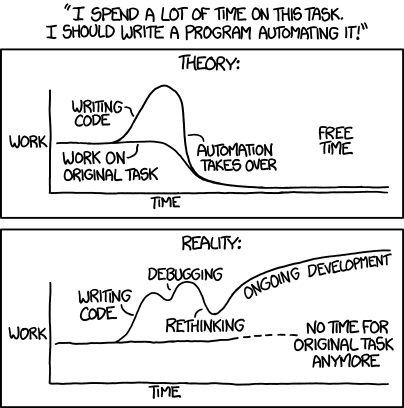When to Automate: The "Rule of Three" for Smart Business Owners
It’s a familiar scenario: you’re performing the same manual task for the third or fourth time, and a nagging thought enters your mind—”There has to be a better way.” As a business owner, you know automation is the answer, but you also know that setting it up requires an investment of time or money.
How do you decide when to stop doing a task manually and start building an automated solution?
While there’s no single magic number, I always guide my clients to a powerful strategic tool known as the “Rule of Three.” This principle is the clearest indicator of whether a process is ready to be retired from your to-do list forever.
The “Rule of Three”: Your Time-Saving Trigger
This practical guideline, widely adopted for innovative system design, suggests that you should perform a task manually up to three times before deciding to automate it. It’s not about being lazy; it’s about being strategic.
- Do it the First Time: Just to Learn. This initial run helps you understand the steps involved, the necessary inputs, and the desired outputs. Don’t worry about saving time; just focus on getting it done correctly. You are mapping the process in your head.
- Do it the Second Time: To Confirm Repeatability. This repetition helps you solidify the steps and identify any inconsistencies or hidden challenges that may arise. You may even start to notice areas where human error could occur.
- Do it the Third Time: The Signal to Stop. By now, you’ve established a clear, repeatable pattern. It is the moment you’re most equipped to automate. The manual effort is likely starting to feel tedious, time-consuming, and potentially error-prone—a strong signal that it’s time to invest in a permanent solution.
Beyond the Number: The Strategic Calculation
While the “Rule of Three” is an excellent rule of thumb, the ultimate decision to automate should always be based on a confident, strategic cost-benefit analysis.
Your goal is simple: Does the one-time effort of automating save you more time and money in the long run than repeatedly performing the task manually?
You need to calculate two factors:
-
The Recurring Cost of Manual Repetition: Calculate the time it takes to do the task once, and multiply that by the estimated number of times you’ll perform it over the next year. Always factor in the potential cost of human error, which can lead to significant rework, lost data, and client dissatisfaction. This is your high-risk expense.
-
The One-Time Cost of Automation (My Job): This refers to the fixed investment required to build, test, and deploy a robust solution. Because I use the efficiency of low-code tools and your existing apps, this cost is minimal, predictable, and always designed to deliver a high Return on Investment (ROI).
If the total estimated cost of manual repetition over the task’s lifetime is greater than the one-time automation cost, the decision is clear.
My Guarantee: The Automation Blueprint
Once you have identified a task that has passed the Rule of Three and the cost-benefit analysis confirms it is a wise investment, we proceed directly to execution.
My three-step process is designed to handle this transition flawlessly:
- The Automation Blueprint: You’ve identified the problem; I define the solution. We use the repeatable process you mapped out manually to design the most efficient automated workflow.
- Custom Automation Build: I handle the entire implementation, connecting your tools and building the logic. You don’t touch a line of code or deal with integrations.
- Your Success, My Success: The new solution runs perfectly and instantly frees up your time.
Ultimately, the goal isn’t just to save a few minutes here and there. It’s about thinking strategically about how you spend your time. By using the “Rule of Three” as your decision tool, you can confidently tell me exactly which tedious task I need to remove from your business forever.
Ready to stop doing that task for the fourth time?
-
https://xkcd.com/1319 ↩

